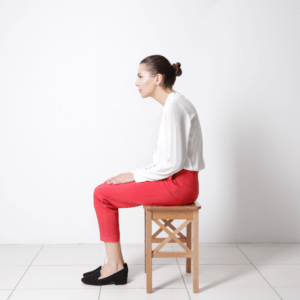The Techniques We Use at Inspired Health
At Inspired Health Chiropractic, we often get asked about the types of techniques we use for chiropractic care ❔ and if they are painful. There is the misconception that a visit to the chiropractor is painful with loads of cracking and crunching sounds 🥴. This is not the case at all! The techniques that we use have been developed and perfected over many years and are all very gentle 🤗. Our aim is to help you live your best, most healthy life without causing any pain or discomfort ♥.
The first thing you need to know about chiropractic care is that it shouldn’t hurt (phew! 😅). We work to ensure that the techniques we choose are the right ones for you depending on your age, the condition we are working on, your medical history as well as your personal preferences. Adjustments are really powerful but also extremely gentle and should never hurt 🙅♀️.
The second thing you need to know is that our chiropractors are highly qualified 🎓, and they know and understand a lot about the human body. Our chiropractors undergo four to five years of training at university level in order to be able to care for you. During their training, they will have learned about biomechanics, chemistry, psychology, radiology, orthopedics, neurology, joint and muscle treatments, massage techniques, and rehabilitation for the whole body + muscle strengthening.
Here are some of the techniques that we use at Inspired Health Chiropractic.
Diversified Technique (the one that pops)
During a diversified adjustment, your back undergoes a quick, gentle stretching of the spinal facet joints (vertebrae) or sacroiliac joints (pelvis). This moves the stuck joints and stimulates the nervous system leading to more movement and less pain. This may result in a 💢 popping noise caused by the change in air pressure within the fluid that surrounds your joints. It can be loud or quiet or there may be no sound at all. The most important thing is a healthy movement of the joints and a better functioning nervous system.
The Activator Technique
One of the things we do during chiropractic care is to make use of an activator. This is a tool that is used to gently adjust the vertebrae, stimulate the nervous system, and relax the surrounding muscles. We generally use this technique to treat patients in high levels of pain, pain-sensitive conditions, elderly patients 👴, children 👶, and post-surgery 🏥 patients. It is very gentle and is also a great tool for those patients feeling a little nervous about care.
Adjusting Blocks
A technique we use involves triangle-shaped padded blocks which we strategically place underneath your pelvis to gently traction the joints, realign the pelvis, and take pressure off nerves in the lower back. While you lie face downwards, we can reposition the sacroiliac joint using the gravity from the block, rather than relying on pressure. This technique is very helpful for patients with disc herniations, and pregnant patients as it is very good for taking pressure off nerves without patients having to move too much. (We use a pregnancy mat for our pregnant ladies).
Dry Needling
We promise you, cross our hearts, that dry needling is not as painful or as scary as it sounds 🙌. This treatment involves pushing a very fine needle into the skin to stimulate pressure points, muscles, nerves, and connecting tissues. This western form of acupuncture can release tight muscles bands, relax muscle spasms, and decrease pain substantially.
The Drop Table
When you come to us for chiropractic care, you will mostly be lying on what we call a drop table (couch with segments). This specialised table is made up of mechanisms that support individual cushions (or ‘drop pieces’) that are located along the table. Using the drop table, we apply gentle pressure to your spine or pelvis and the area being worked on will simultaneously be gently ‘dropped’ by the table. This movement of the table/couch takes force away from the technique and helps us realign the spine and pelvis.
Trigger Point Therapy
A trigger point is an area tightness in a muscle that may cause pain locally or refer to another part of the body. This kind of tension can disrupt daily activities as it can mimic a trapped nerve and even cause headaches. Trigger point therapy aims to work on those areas by gently pressing on the muscle. This changes blood flow and relaxes the muscle. Often referred pain decreases as the muscle is being held. There are hundreds of common trigger point sites in the body. We have posters in the massage room if you would like to know more.
The Sacro-Occipital Technique
We know it has a strange name, but this technique can truly do wonders for your body 😍 and your nervous system. This technique was developed to balance the body between the sacrum (pelvis) to the occiput (top of the neck). When working together the whole spine and nervous system can function at its optimum. This technique can be used with a combination of blocking and diversified techniques. It can also be used with flexion distraction (a form of tractioning the lower back with the blocks) which is a gentle way of helping patients with disc herniations.
To talk more about the gentle 💕 techniques that we use and what you can expect when you visit Inspired Health, contact us here.





